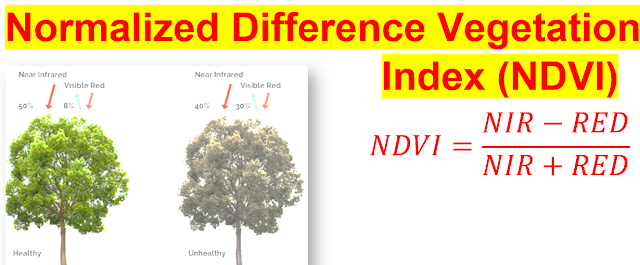Normalized Difference Vegetation Index (NDVI) is used to quantify vegetation greenness and is useful in understanding vegetation density and assessing changes in plant health. NDVI is calculated as a ratio between the red (R) and near infrared (NIR) values in traditional fashion:
NDVI is calculated in accordance with the following
generalized formula:
NDVI=(NIR-RED)/(NIR+RED)
Where NIR - reflection in the near-infrared spectrum and RED - reflection in the red range of the spectrum.
NDVI Formula for
NDVI=(Band 4-Band 3)/(Band 4+Band 3),
Landsat 8,
NDVI values range from -1.0 to 1.0 representing greens, where negative values are mainly formed from clouds, water and snow, and values close to zero are primarily formed from rocks and bare soil.
Very small values (0.1 or less) of the NDVI function correspond to empty areas of rocks, sand or snow.
Moderate values (from 0.2 to 0.3) represent shrubs and meadows, while large values (from 0.6 to 0.8) indicate temperate and tropical forests.
NDVI is a measure of the state of plant health based on how the plant reflects light at certain frequencies (some waves are absorbed and others are reflected).





